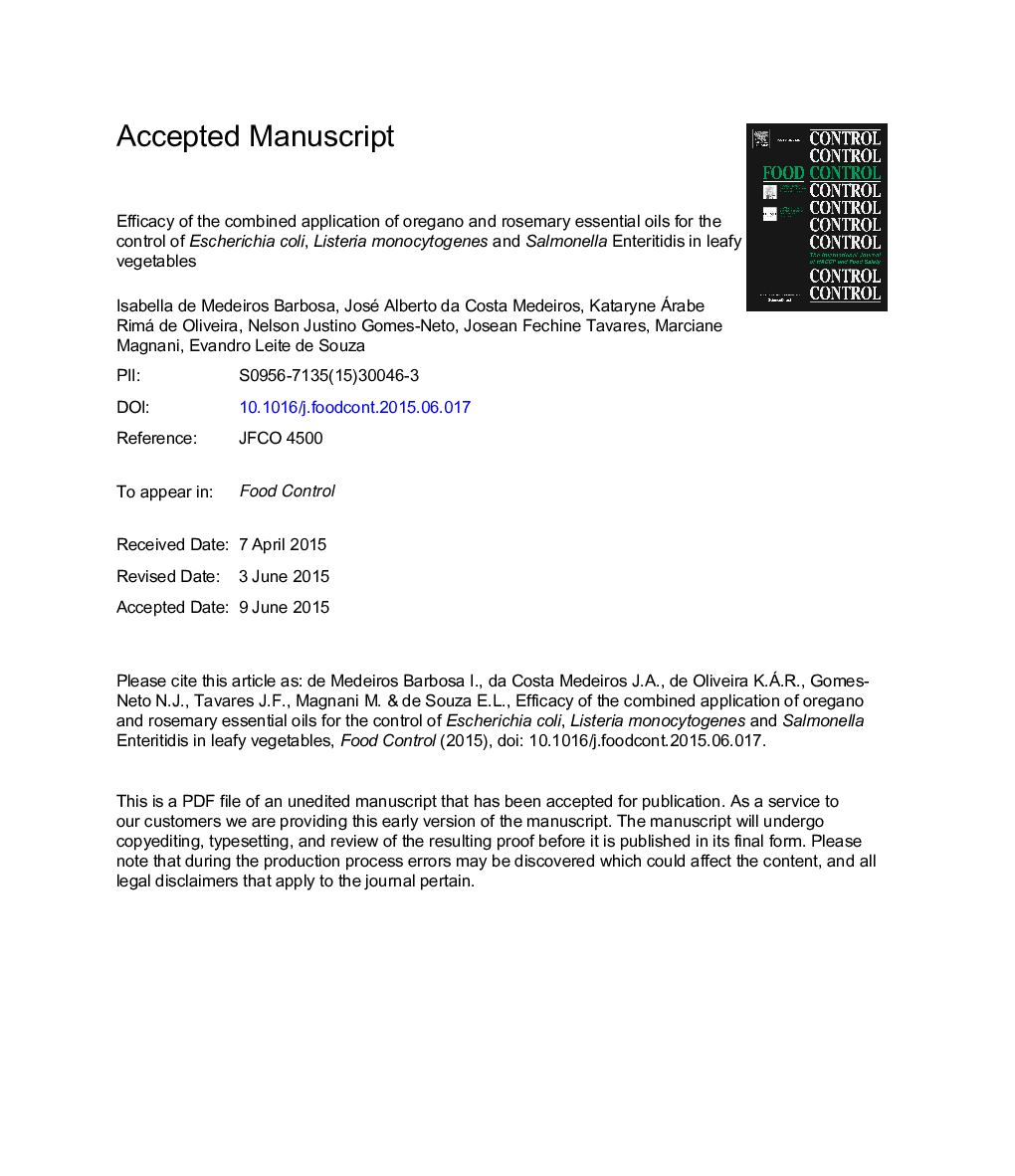| Article ID | Journal | Published Year | Pages | File Type |
|---|---|---|---|---|
| 6390609 | Food Control | 2016 | 39 Pages |
Abstract
This study assessed the effect of the combined application of essential oils (EOs) from Origanum vulgare L. - oregano (OVEO) and Rosmarinus officinalis L. - rosemary (ROEO), alone or in combination at subinhibitory concentrations, against three pathogenic bacteria that are associated with fresh leafy vegetables: Listeria monocytogenes (L. monocytogenes), Escherichia coli (E. coli) and Salmonella enterica Serovar Enteritidis (S. Enteritidis). The inhibitory effects were evaluated by determining the minimum inhibitory concentration (MIC) and the fractional inhibitory concentration index (FICI) and assessing the viable cell counts in vegetable broth and artificially infected vegetables over time. Still, the effects of the EOs on native spoilage native flora were assessed. The MIC of OVEO was 0.6 μL/mL against the test strains either in single and mixed inoculum. The MIC of ROEO was 5 μL/mL against L. monocytogenes and E. coli and 10 μL/mL against S. Enteritidis in single inocula, whereas it was 10 μL/mL against the mixed inoculum. The FICI of the combined EOs was 0.5 against the mixed bacterial inoculum, which suggested a synergic interaction. The incorporation of OVEO and ROEO alone (MIC) or combined at different subinhibitory concentrations in vegetable broth resulted in a decrease in the viable cell counts of all test strains over 24 h. Similarly, the EOs alone or in the tested combinations reduced the viable cell counts of all test strains in experimentally infected fresh vegetables, besides to decrease the counts of spoiling native flora (mesophilic bacteria, enterobacteria and fungi). These findings reinforce the rational for the use of OVEO and ROEO in combination at subinhibitory concentrations to guarantee the safety and extend the shelf life of fresh vegetables.
Related Topics
Life Sciences
Agricultural and Biological Sciences
Food Science
Authors
Isabella de Medeiros Barbosa, José Alberto da Costa Medeiros, Kataryne Árabe Rimá de Oliveira, Nelson Justino Gomes-Neto, Josean Fechine Tavares, Marciane Magnani, Evandro Leite de Souza,
